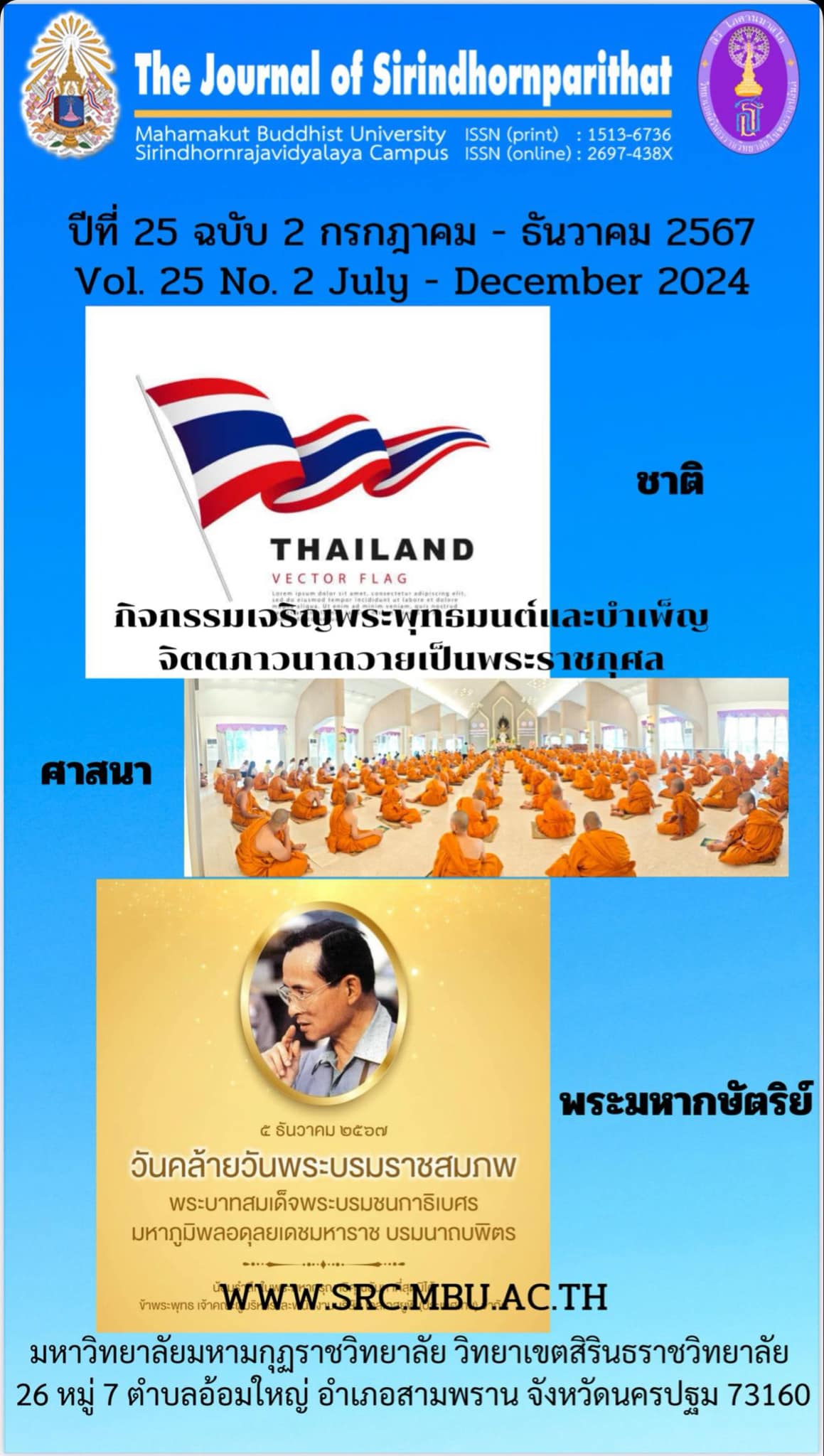Songkhla Old Town Community in Globalization
Keywords:
Songkhla Old Town Community, GlobalizationAbstract
The objective of this article is to study the Songkhla old town community during globalization. It was found that the old town community has a history dating back more than 200 years. There are various ancient architectural buildings lining both sides of Nakorn Nok Road, Nakorn Nai Road, and Nang Ngam Road. On Nakorn Nok Road, which is located by the side of the lake, had significant port facilities for cargo transportation, and there was a large rice mill known as "Hub Ho Hin" which people call "Red Mill." For the Nang Ngam Road, it was originally known as 'Kao Hong Road' because in the old days, there were only nine row houses along this road. This road is like the heart of the Songkhla old town community. In the past, there was trade with China, making this old town area an economic hub due to its convenient access to maritime transportation. However, as transportation shifted from water to land and with the development of Hat Yai as the economic center of the southern region, the old town community of Songkhla began to decline. People gradually migrated to conduct trade in Hat Yai, leaving the old houses and buildings abandoned and undeveloped until the year 2552 (2009 CE). A group of individuals who had a strong sense of local identity and wanted to revitalize the old town decided to bring it back to life. They developed and transformed the community to keep up with the modern era under the name "People Who Love Songkhla." They collectively used modern technology to gather and communicate information about community activities through online social media platforms such as Facebook and Line. This development of the old town community in Songkhla has led to rapid changes in culture, society, economics, and politics, making it an important cultural tourism destination in the southern region.
References
เทศบาลนครสงขลา. (2562). แผนพัฒนาชุมชนย่านเมืองเก่าสงขลา. (ออนไลน์) สืบค้นเมื่อ 29 สิงหาคม 2566. จาก https://www.songkhlacity.go.th/2020/content_community/cate/3?com munity_cid=20
นิธิ เอียวศรีวงศ์. (2537). หมายเหตุวัฒนธรรมร่วมสมัย. กรุงเทพฯ : อมรินทร์พริ้นติ้งพับลิชชิ่ง.
ปริยฉัตร เวทยนุกูล. (2565). Culture for Sale ทางกลับวัฒนธรรมโลกาภิวัตน์. ศูนย์มานุษยวิทยา สิรินธร (องค์การมหาชน). (ออนไลน์) สืบค้นเมื่อ 30 สิงหาคม 2566. จาก https://www.sac.or.th/portal/ th/article/detail/342
ภณ ใจสมัคร. (2553). การเปลี่ยนแปลงทางสังคมไทยในโลกาภิวัตน์. (ออนไลน์). สืบค้นเมื่อ 11 กันยายน 2566. จาก https://www.academia.edu/9820350/อ ภณ
รังสี รัตนปราการ, จเร สุวรรณชาต, สืบสกุล ศรีสุข. (2560). Hertage Trust กับการพัฒนาย่านเมืองเก่าสงขลา. ศูนย์ศึกษามหานครและเมือง มหาวิทยาลัยรังสิต.
ราชบัณฑิตยสถาน. (2556). พจนานุกรมฉบับราชบัณฑิตยสถาน พ.ศ. 2554 เฉลิมพระเกียรติพระบาทสมเด็จพระเจ้าอยู่หัว เนื่องในโอกาสพระราชพิธีมหามงคลเฉลิมพระชนมพรรษา 7 รอบ 5 ธันวาคม 2554. กรุงเทพฯ : ราชบัณฑิตยสถาน.
วีรวรรณ สาคร. (2566). ย่านเมืองเก่าสงขลา. (ออนไลน์) สืบค้นเมื่อ 29 สิงหาคม 2566. จาก https://wikicommunity.sac.or.th/community/349#chck2
สนิท สมัครการ. (2549). การเปลี่ยนแปลงทางวัฒนธรรมกับการพัฒนาของสังคม. พิมพ์ครั้งที่ 7 โรงพิมพ์องค์การสงเคราะห์ทหารผ่านศึก.
อดิศร ศักดิ์สูง. (2552). พหุวัตสังคมโลก. พิมพ์ครั้งที่ 3. มหาวิทยาลัยทักษิณ.
อริสา สายศรีโกศล. (2565). ย่านเมืองเก่าสงขลา มิติของการจัดการชุมชนสู่การท่องเที่ยวเชิงวัฒนธรรม. วารสารบัณฑิตแสงโคมดำ. 7 (3) : 578-598.
อาลาวีย์ ฮะซานี และณัฐพงษ์ หมันหลี. (2564). การพัฒนาสื่อสิ่งพิมพ์เพื่อการประชาสัมพันธ์การท่องเที่ยวย่านเมืองเก่าสงขลาด้วยเทคโนโลยีความเป็นจริงเสริม. วารสารเทคโนโลยีและสื่อสารการศึกษา คณะศึกษาศาสตร์มหาวิทยาลัยมหาสารคาม. 4 (11) : 7-19.
aec10news. (2565). “ย่านเมืองเก่า จังหวัดสงขลา” เมืองท่องเที่ยววัฒนธรรมต้นแบบ. สืบค้นเมื่อ 29 สิงหาคม 2566. จาก https://aec10news.com/contents/special-report/182855/
Downloads
Published
Issue
Section
License
Copyright (c) 2024 Mahamakut Buddhist University

This work is licensed under a Creative Commons Attribution-NonCommercial-NoDerivatives 4.0 International License.
บทความที่ได้รับการตีพิมพ์เป็นลิขสิทธิ์ของ มหาวิทยาลัยมหามกุฏราชวิทยาลัย วิทยาเขตสิรินธรราชวิทยาลัย
ข้อความที่ปรากฏในบทความแต่ละเรื่องในวารสารวิชาการเล่มนี้เป็นความคิดเห็นส่วนตัวของผู้เขียนแต่ละท่านไม่เกี่ยวข้องกับหาวิทยาลัยมหามกุฏราชวิทยาลัย วิทยาเขตสิรินธรราชวิทยาลัย และคณาจารย์ท่านอื่นๆในมหาวิทยาลัยฯ แต่อย่างใด ความรับผิดชอบองค์ประกอบทั้งหมดของบทความแต่ละเรื่องเป็นของผู้เขียนแต่ละท่าน หากมีความผิดพลาดใดๆ ผู้เขียนแต่ละท่านจะรับผิดชอบบทความของตนเองแต่ผู้เดียว




